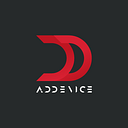eCommerce app development is a lucrative investment when looking far into the future. Nasdaq predicts that by 2040 eCommerce will facilitate about 95% of all purchases. Today, companies need to prepare to meet the ever-growing demand for online shopping services. That’s why many retail businesses are showing interest in knowing how to make online selling app for their business.
Out of all eCommerce sales, mobile commerce is steadily growing pace. By 2021, mobile ecommerce sales are expected to account for 54% of total eCommerce sales. By the end of 2020, US mobile retail revenue is expected to reach $339.03 billion. Today, having a shopping online app is a great opportunity for businesses to establish their eCommerce presence and to enter the future fully equipped.
The future success of your shopping application depends on a number of factors. Let’s investigate each of them so that you would create a shopping app that will become a powerful addition to your business tools:
- Applications speed
- Strict business goals
- Comprehensive strategy
- Unique value
- User-friendliness
Now that you know how to create a shopping app and which deliverables ensure its success, it’s time to move to another important consideration — app features. Usually, and eCommerce shopping app consists of two main parts:
- Customer panel — For users’ use to register and to make orders.
- Admin panel — Every online shopping app has an admin panel that allows you and your employees to add content, products, moderate users, reviews, and much more.
Technology Stack to Create a Shopping App
This part explains how to make an online selling app from a technical point of view. The table below explains the process to create an app and its front-end for iOS and Android. Also, it provides an overview of the technologies needed to create the web version of the admin panel.
iOS:
Programming language:
- Front-end: Swift, Objective C
- Back-end: Ruby, Python, Java, PHP
IDE: Xcode, AppCode
Platform SDK: iOS SDK, Cocoa Touch
Android:
Programming language: Kotlin, Java
Development OS: Mac OS, Ubuntu
IDE: Android Studio
Platform SDK: Android SDK
Web:
Markup languages: HTML5, CSS3
Programming languages: JavaScript, TypeScript
JavaScript Frameworks: Angular, React, Vue, etc.
The process to create a shopping app can be summarized in 10 major steps
- Market analysis — Without a comprehensive market analysis, you won’t be able to build a shopping app without a competitive edge. Thus, it’s important to study the market, identify your future competitors, analyze their unique selling proposition, and create a short overview of possible features.
- USP — After you analyze the market, it’s time to create your Unique Selling Proposition (USP). Come up with a few ideas for your future applications, discover new ways how you can improve customer experience and which unique features your application will have.
- Find the right app development company — At this stage, you need to find an app development vendor that will know how to make an online selling app.
- Finalize project specifications — Together with a development vendor create specifications of your project. Decide on the number of features, unique functionality, technology stack, and software architecture of your application.
- Create UX/UI design — The design of your application should be about ease of use, user-friendliness, and simplicity. These are e-commerce app design essentials that will allow you to create an application that users will love to use.
- App development — eCommerce app development is the key process during which developers will work on frontend and backend parts of your application. You can either create two apps for iOS and Android or start the development with a single application for one of these platforms.
- Testing and QA — After an application is ready, quality assurance engineers will test it thoroughly to track any bugs that might interfere with user experience. After all the bugs are identified, they will be sent to developers for fixes. Thus, your development team will ensure that nothing will interfere with the use of the app.
- App release — This is the final app of the development process. At this stage, developers will submit your application to the App Store and Google Play. The app should undergo a few checks by the app marketplaces to appear there.
- Online shopping app promotion — After a successful release on the market, it’s time to promote your application to attract new users. You can use a comprehensive approach and utilize a few marketing channels, combining SMM, paid advertising, influence marketing, and other strategies.
- Plan for further development and improvements — Businesses standing behind such apps continue working on their improvements even after their launch. Based on the collected analytics data after your app hits the market, you can plan for future app improvements and ongoing development. Add new features, identify problems, and offer solutions, improve the shopping experience, and continue working on your application.
Now you know how to make an online selling app from both business and technical perspectives.
